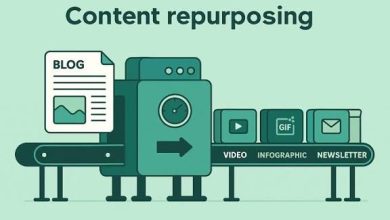Customer Journey Mapping: A Guide for Business Growth
Understand how to map your customer’s life cycle journey and use it to strengthen relationships, boost retention, and drive sustainable business growth.

If you’ve been in business long enough, you already know that customers don’t just appear out of nowhere and remain loyal forever. They move through a series of stages,from first discovering your brand to becoming loyal advocates. This is what we call the customer journey mapping.
And here’s the truth: mapping it out is no longer optional. It’s one of the smartest ways to understand your customers, improve their experience, and grow your business to serve them better.
Stages of the Customer Life Cycle
To map the journey, you must first understand the stages your customers pass through.
1. Awareness
This is when customers first hear about your brand, whether through social media, word of mouth, or an ad. Your job here is to make a memorable first impression.
2. Consideration
At this point, customers know you exist but are comparing you with competitors. They check reviews, ask friends, or explore your content. This stage requires credibility and trust-building.
3. Acquisition (Purchase)
This is where the transaction happens. If your process is seamless and your offer clear, customers are more likely to buy from you.
4. Retention
Getting a customer is one thing; keeping them is another. To retain your customers, you must engage in consistent communication, great service, and personalised offers to keep them coming back.
5. Advocacy
At the final stage, satisfied customers become brand ambassadors. They recommend you to others, creating organic growth for your brand.
How to Map the Customer Life Cycle Journey
Mapping the customer life cycle journey is about connecting with real customer behaviour. Here’s how you can do it effectively:
1.Identify customer personas:
This is knowing who you’re targeting, their pain points, and their goals. Are they Gen Z, millennials or baby boomers? What this knowledge does is that it helps you tailor your brand story to meet the right type of people.
2. Define touchpoints:
List every point where customers interact with your brand,from social media posts to after-sales service.
3.Understand emotions and expectations:
Customers don’t just buy products; they buy experiences. Track how they feel at each stage and see how it affects them and your brand.
4. Map the channels:
Recognise whether customers find you through Instagram, your website, or a physical store. The ideal behind this is that you will know where to target to meet your customers. In fact, when running paid ads, this gives you a snippet of where your customers are already.
5. Analyse gaps and opportunities:
Find where customers drop off or feel frustrated, then fix it. Get to know why they drop off from your brand’s train. It’s not just about finding the why and where, instead it is to see how you can close the gaps and perform better.
Challenges Businesses Face
Of course, it’s not always straightforward to map your customers’ journey. Many businesses struggle with:
1. Lack of Accurate Data
First, lack of accurate data often makes it difficult to build a clear picture of customer behaviour. For instance, if you don’t track how customers found your brand or why they stopped engaging, you’ll be left guessing.
Guesswork leads to wasted marketing spend and poor decision-making. Businesses need reliable data. This could be done via customer feedback forms, sales records, or digital analytics to create an honest map of the journey.
2. Misalignment Between Teams
Another common challenge is misalignment between teams. In many businesses, marketing focuses on attracting new customers while sales and customer service concentrate on immediate conversions.
Without effective collaboration, this creates disjointed experiences. Customers may feel they were promised one thing in the marketing stage but get something different after purchase.
3. Ignoring Customer Feedback
Lastly, ignoring customer feedback is a major obstacle. Customers often leave signals like complaints, suggestions, or even silence, but some businesses treat them as noise. By overlooking this input, brands fail to spot the very pain points that cause customer drop-offs.
Best Practices for Success
To overcome these challenges, consider the following practices:
1. Use customer data and analytics to guide decisions.
Every click, purchase, or review holds insight into how customers interact with your brand. Analysing these patterns helps you identify not just where customers are, but what motivates them.
For example, a business might notice that customers from Instagram are more likely to drop off during checkout, pointing to the need for a smoother mobile payment system.
2. Continuously update your journey map as customer behaviour evolves.
Customer behaviour changes with time, technology, and even the economy. What worked last year may not apply today. Businesses that regularly update their journey maps, say, quarterly, are better positioned to adapt their strategies before they lose customers.
3. Personalise communication to show that you value each customer.
In customer journey mapping, customers no longer respond to generic messages. They expect brands to recognise their unique needs. For example, an online fashion store can send personalised recommendations based on a customer’s previous purchases, instead of blasting the same promo code to everyone. Personalisation not only improves retention but also deepens trust.
4. Foster collaboration between all departments that touch the customer experience.
Customer journey mapping shouldn’t sit on the marketing team’s desk alone. Sales, customer service, product development, and even logistics all play a role. When these teams work together, they share insights that create a more accurate and seamless journey.
Conclusion
Customer journey mapping is not a one-time task. It’s an ongoing process that helps you see your business from your customer’s perspective.
When you understand the stages they go through, their expectations, and where they face challenges, you can deliver experiences that keep them coming back. And in today’s competitive market, that’s exactly what sets businesses apart.




